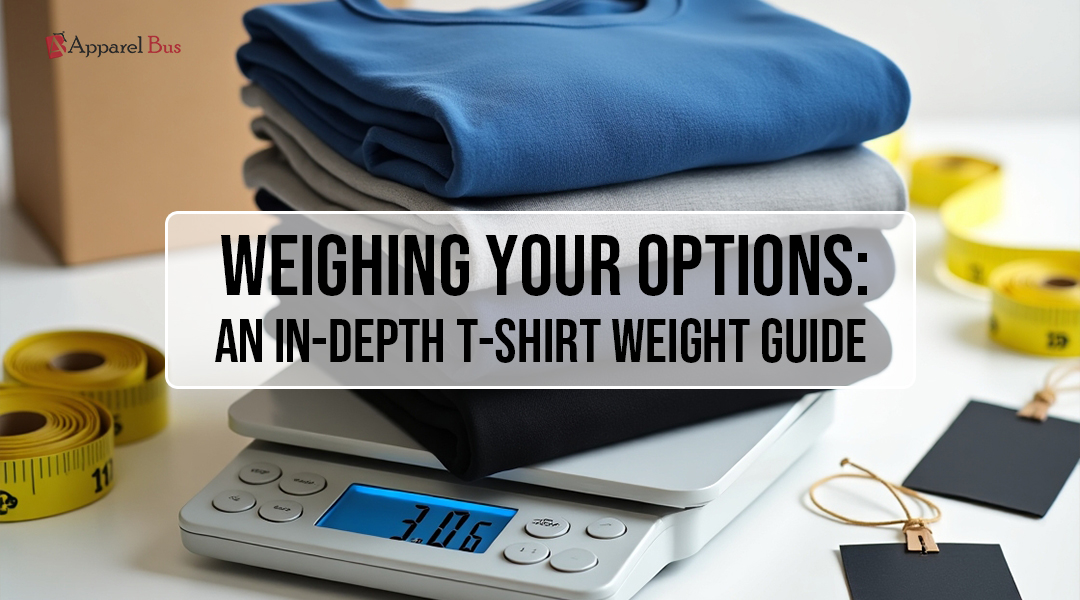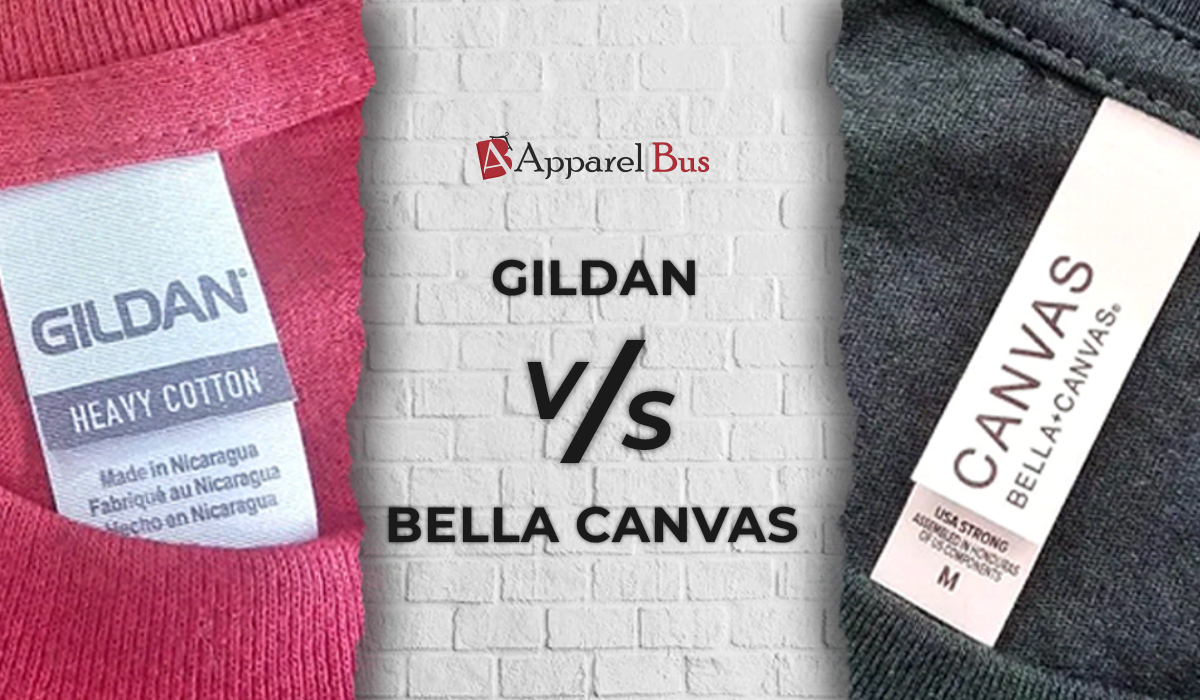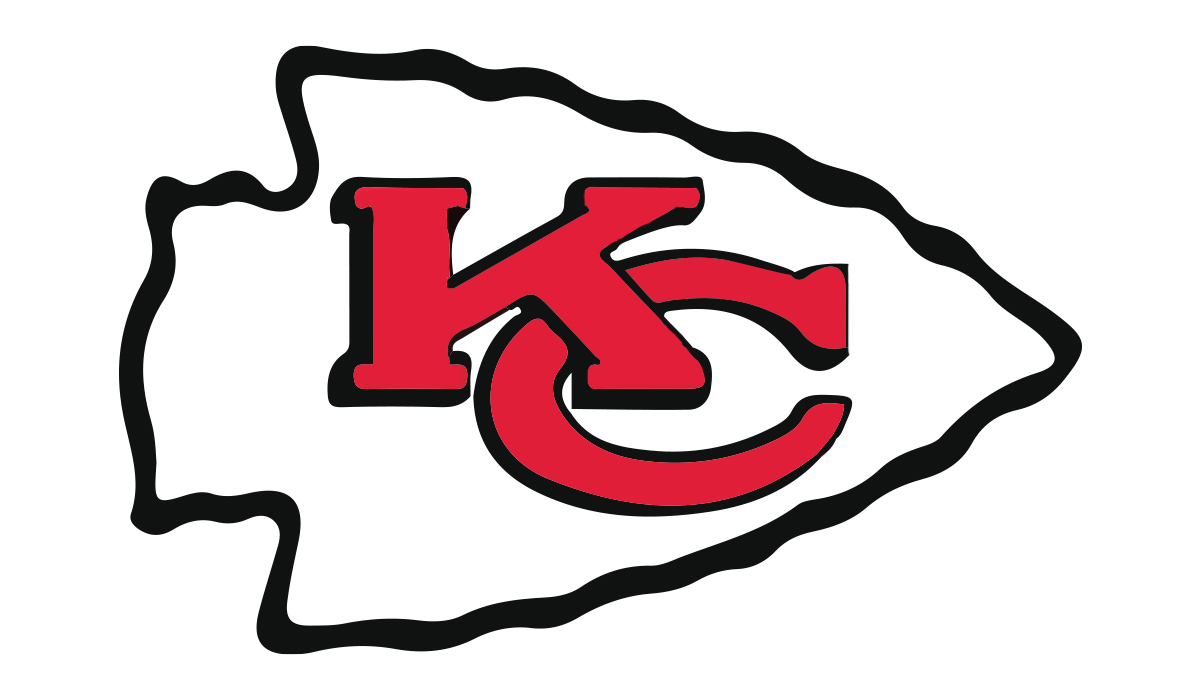Weighing Your Options: An In-Depth T-Shirt Weight Guide
Have you ever considered how much a T-shirt weighs before customizing it? It's an aspect that often goes unnoticed, yet it can significantly impact the feel, appearance, and durability of the apparel. Whether you're designing t-shirts for a fashion campaign, promotional event, or any special purpose, understanding T-shirt weight is essential for getting the right fit and function.
This guide goes beyond the basics by explaining all-night wear, supple tee, ultra-light t-shirt weights and fabrics, and t-shirts for warmth and toughness. So, by the end of this blog, you’ll be able to definitively identify how much does a tee shirt weigh to meet your vision and your customers.
What is the Average T-Shirt Weights?
The must-know facts or basics consist of the following: The weight of a t-shirt in kg can vary greatly depending on the type of material used, the size of the t-shirt, and the thickness of the fabric. In general, a medium-sized T-shirt made of the best t-shirt fabric balances between 4.5 to 5.5 ounces or 130 to 155 grams. This weight range is suitable for body-friendly textiles.
How is T-shirt Fabric Weight Measured?
T-shirt weights are typically measured using three methods:
- Grams per Square Metering (GSM)
- Ounces per Square Yard (oz/yd²)
- Singles (Thread Count)
Let us take a closer look at each of these issues that can have an impact on the final result.
1. Weight in Grams Per Square Meter (GSM)
GSM, also known as grams per square meter, is a common unit in the textile industry and defines the mass of fabric per square meter. It focuses on the capability of the material’s thickness and density. Understanding GSM in T-shirt fabric is crucial when assessing textile quality:
-
High GSM: The fabric has a tighter weave, is thicker, and feels stronger and more durable.
-
Low GSM: This means the fabric is lighter, less dense, and usually feels softer and more breathable.
However, a higher or lower GSM is not better or worse; it simply depends on what you expect from the material and how you want the T-shirt to feel and perform. For instance:
-
Lighter Fabrics (Lower GSM): Perfect for use in summer wear or items of clothing that are desired to have a relatively smoother touch. These fabrics are lightweight and suitable for warmer climates as they are not too hot for the wearers. They are the go-to when you want the lightest t-shirt option.
-
Heavier Fabrics (Higher GSM): For fabrics, this heavier choice is perfect for winter clothing or any product that needs to handle more exposure to the elements. They provide warmth, hold up well in different weather conditions, and are often considered Heavyweight t-shirt options in any fabric weight guide.
2. Ounces Per Square Yard (oz/yd²)
The imperial unit of density for fabrics is ounces per square yard (oz/yd²), which is equivalent to GSM and measures the fabric weight in ounces per square yard. As in GSM, a higher oz/yd² means a fabric weighs more and is thicker, as opposed to if the value is low, then the fabric is lighter.
For t-shirts, the typical range is around 4 to 7 oz/yd²:
-
4–5 oz/yd²: Usually applied in materials for t-shirts because of its light, fresh texture. This is your classic lightweight t-shirt.
-
6–7 oz/yd²: Usually used in t-shirts, which are medium to Heavyweight t-shirt and can give some structure and warmth.
3. Singles (Thread Count)
Singles relate to yarn count, whereby t-shirt yarn thickness determines the fabric thickness or density. The thread count is determined by the number of times the yarn is twisted, impacting the fabric’s weight, texture, strength, and drape:
-
Higher Singles Count: For a vastly superior, softer, and smoother cloth. Higher singles, such as 30 singles, are normally found in premium T-shirts.
-
Lower Singles Count: Proposes a loud, dense weave of material. Such values as lower singles, such as 18 singles, are common with basic industrial and rougher t-shirts.
All these measurements contribute to the quality, durability, and feel of the t-shirt. However, depending on the purpose, personal preference, as well as the design requirements it is intended for the following are the best choices.
Lightweight T-Shirts
Regular t-shirts usually range from 120 GSM to 150 GSM or 3 ounces. 5–4. 5 oz/yd² range. These t-shirts are therefore suitable for such weather as warm or any event where a comfortable and soft fabric is needed. Still, these t-shirts do not differ from the full-weight t-shirts in quality or application. They’re perfect when you want a Midweight t-shirt feel but leaning toward the lightest t-shirt possible.
Feel and Comfort
Slim t-shirts are comfortable t-shirts primarily made for casual wear, featuring a thin texture that is non-irritant to the skin. They fit almost all body shapes and sizes, making them fashionable. Due to this, they are best worn during summer or underneath other pieces of clothing.
Breathability
Due to their lighter weight, these t-shirts offer excellent breathability. Air can flow freely through the fabric, helping to keep your body cool even in hot and humid conditions. This makes lightweight t-shirts ideal for exercising or for people who work in warm environments.
Printability
Among all commercial printing materials, lightweight t-shirts are excellent for custom printing, especially when using the direct-to-garment (DTG) method. One big advantage is that their fine fabric allows for high-resolution prints, so detailed designs look sharp and clear. However, because the material is thinner, you need to make sure the prints are done well to prevent fading over time, since lightweight fabrics may not last as long as heavier ones.
Durability
So, lightweight t-shirts are comfortable and breathable, but they’re not as sturdy as heavier options. However, if you wash them gently and air-dry them, they can still last a long time.
Medium-weight T-shirts:
Medium-weight t-shirts usually range from 150–180 GSM or about 5–5.3 oz/yd². These t-shirts are often called the ‘Goldilocks’ of t-shirt weights, not too heavy, not too light, but just right. They’re comfortable, reasonably durable, and versatile enough to be worn for many different purposes.
Feel and Comfort
Medium-weight t-shirts offer the perfect balance of softness and thickness. They feel comfortable against the skin but still have enough structure to hold their shape without looking flimsy. This makes them versatile enough to wear in any season and suitable for almost any dress code.
Breathability
However, as compared to lighter t-shirts, these slim-fit t-shirts are slightly thicker than the light t-shirts and are still quite fizzy. They allow enough air to flow through the fabric, keeping the wearer comfortable and cool, even during moderate physical activity.
Printability
Because of their balance of fabric thickness and softness, medium-weight t-shirts are great for a variety of printing methods. Whether you choose DTG, screen printing, or sublimation, these shirts handle it well. They hold prints nicely, keeping designs sharp and vibrant.
Durability
Medium-weight t-shirts seem to be a wonderful blend of comfort and sturdiness in a reasonable manner. They are strong enough to be used for day wear, yet they are flexible and can be used in extreme temperatures. This makes them a versatile option for customers who need durable t-shirts.
Heavyweight T-Shirts with the Heavy Duty Option
Any t-shirts with GSM of 180 and above, or T-shirts with oz/yd² of 5 and above, can be termed as Heavyweight t-shirt. It should be noted that these T-shirts are rather warm, heavy-duty t-shirts and long-lasting in wear, so they suit the climate, as well as the tough wearing and people who like to wear clothes with a more cut shape.
Feel and Comfort
Heavyweight T-shirts feel thicker and denser than other types of T-shirts because of their substantial weight. They provide extra warmth and have a sturdy, solid look, which makes them great for layering in cold weather. Although they aren’t as soft as lightweight or medium-weight T-shirts, they still feel comfortable to wear.
Breathability
Heavyweight t-shirts aren’t as breathable as lighter ones because the fabric is thicker. However, they provide excellent insulation, making them ideal for winter or for anyone who wants a sturdier, more substantial layer.
Printability
If you want to print large, bold images that stand out, heavyweight t-shirts are a great choice. Traditional methods like screen printing work especially well on heavyweight fabrics because the prints stay vibrant and don’t fade easily over time.
Durability
Heavyweight t-shirts are extremely durable. Their thicker fabric makes them more resistant to wear and tear, which is why they’re a great choice for workwear, outdoor use, or any situation where you need extra strength and longevity.
How to Decide T-shirt Weights: Which One is Right for You?
Now that you know the different types of T-shirt weights, the next step is to figure out which weight is best suited for your specific situation or purpose. Here are some key points to help you decide:
Climate and Season
- Summer or Warm Climates: Choose thin, lightweight t-shirts that allow air to flow easily and keep you cool.
- Winter or Cooler Climates: Choose t-shirts with a thicker, denser fabric that provides better insulation and durability for colder weather.
Activity Level
- Active or Outdoor Activities: Medium-weight t-shirts strike a balance between two key qualities: they offer the comfort of lightweight shirts while also providing good durability and breathability.
- Casual Wear or Layering: T-shirts are typically lightweight, so they can be worn on their own or layered with other clothes, depending on the occasion.
Print Requirements
- Detailed or Intricate Designs: For detailed prints, it’s best to choose lightweight or medium-weight t-shirts because they hold fine designs well.
- Bold or Simple Designs: Heavyweight t-shirts are ideal for customization like screen printing.
Final Thoughts Drawing Up the Balance
When choosing a T-shirt weight, focus on picking the type that best fits your customer’s needs. Whether you’re designing for fashion, function, or promotional use, it’s important to understand the details of T-shirt weight. Paying attention to this can help you create garments that look better, feel better, and make your clothing line stand out.
Keep in mind that there’s no single ‘perfect’ T-shirt weight for everyone. The best choice depends on your preferences, how you’ll use the shirt, and what you want it to feel like. Think about factors like climate, how active you’ll be, and your printing needs, these will help you decide which T-shirt weight is right for you.
At Wholesale Apparel, we have different categories of t-shirts in both normal and heavy weights so that you can get the best t-shirts that will suit your brand. Need a light summer-weight t-shirt, a weighted t-shirt, a Midweight t-shirt, a Heavyweight t-shirt, or anything between the two? You’ll find trusted brands like Gildan, Shaka wear, Bella+Canvas, and Port Authority. Visit our Wholesale t-shirt collection today and see the impact that the appropriate t-shirt weight will have.





.jpg)
.jpg)
.jpg)
.jpg)
.jpg)
.jpg)
Leave us a comment